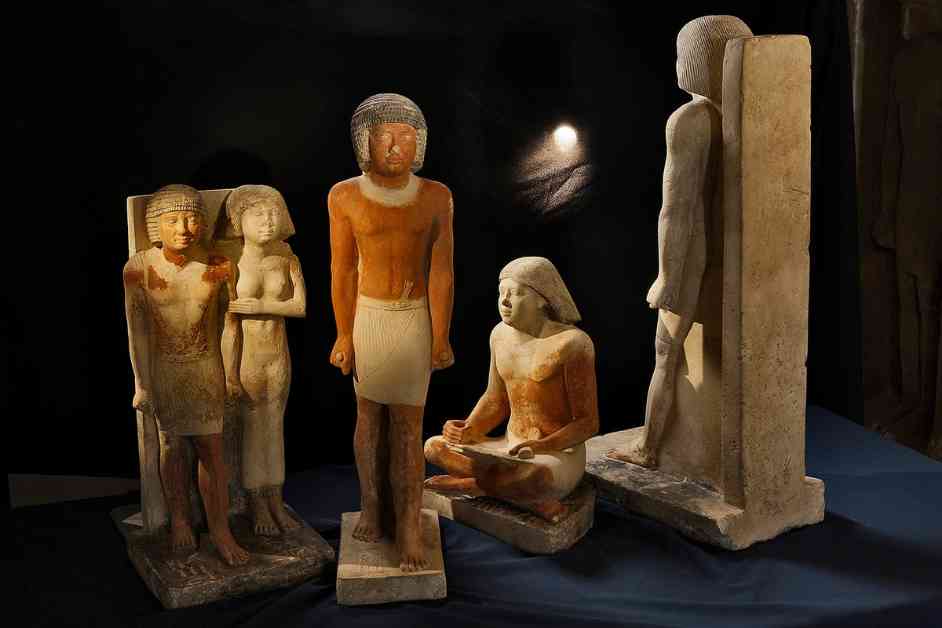Ancient Egyptian scribes may have suffered from back pain and neck strain due to their extensive periods of sitting and kneeling, according to a recent study. These scribes were an elite group in society, responsible for important administrative tasks and record-keeping. Despite the job not being physically demanding, the skeletons of these scribes showed signs of strain and overloading in various joints throughout their bodies.
The study, conducted by researchers at the Czech Institute of Egyptology, analyzed the skeletal remains of 69 male individuals, 30 of whom were identified as scribes based on written documents found in their tombs. These individuals were buried in Egypt between 2700 and 2180 B.C.E. The researchers compared the skeletal traits of the scribes with those of other ancient Egyptians who were not scribes and found significant evidence of wear and tear on the joints of the writers.
The scientists believe that the repetitive writing positions adopted by the scribes, such as sitting cross-legged or kneeling for extended periods, contributed to the physical strain on their bodies. This strain manifested in osteoarthritis in the right knee, as well as degeneration of the spine and joints. These findings highlight the physical toll that prolonged sitting in an improper position can have on the human skeleton.
Experts in the field, such as Egyptologists and anthropologists, emphasize the importance of this research in providing a more nuanced understanding of the lives of ancient Egyptian scribes. By examining the physical impact of their working positions on their bodies, researchers are shedding light on the occupational hazards faced by these privileged members of society.
Moving forward, the study’s authors plan to expand their research by examining remains from different burial sites to confirm their results. This will provide a more comprehensive understanding of the health risks associated with the profession of scribes in ancient Egypt. Despite the prestige associated with being a scribe in Egyptian society, it appears that even this coveted profession came with its own set of health challenges.
In conclusion, this study offers valuable insights into the physical toll that certain occupations can take on the human body, even thousands of years ago. By unraveling the mysteries of ancient Egyptian scribes’ skeletal remains, researchers are painting a more detailed picture of the daily lives and struggles of these privileged individuals.






